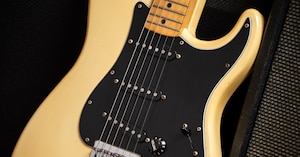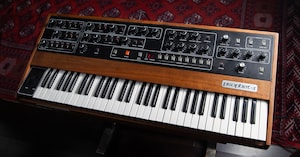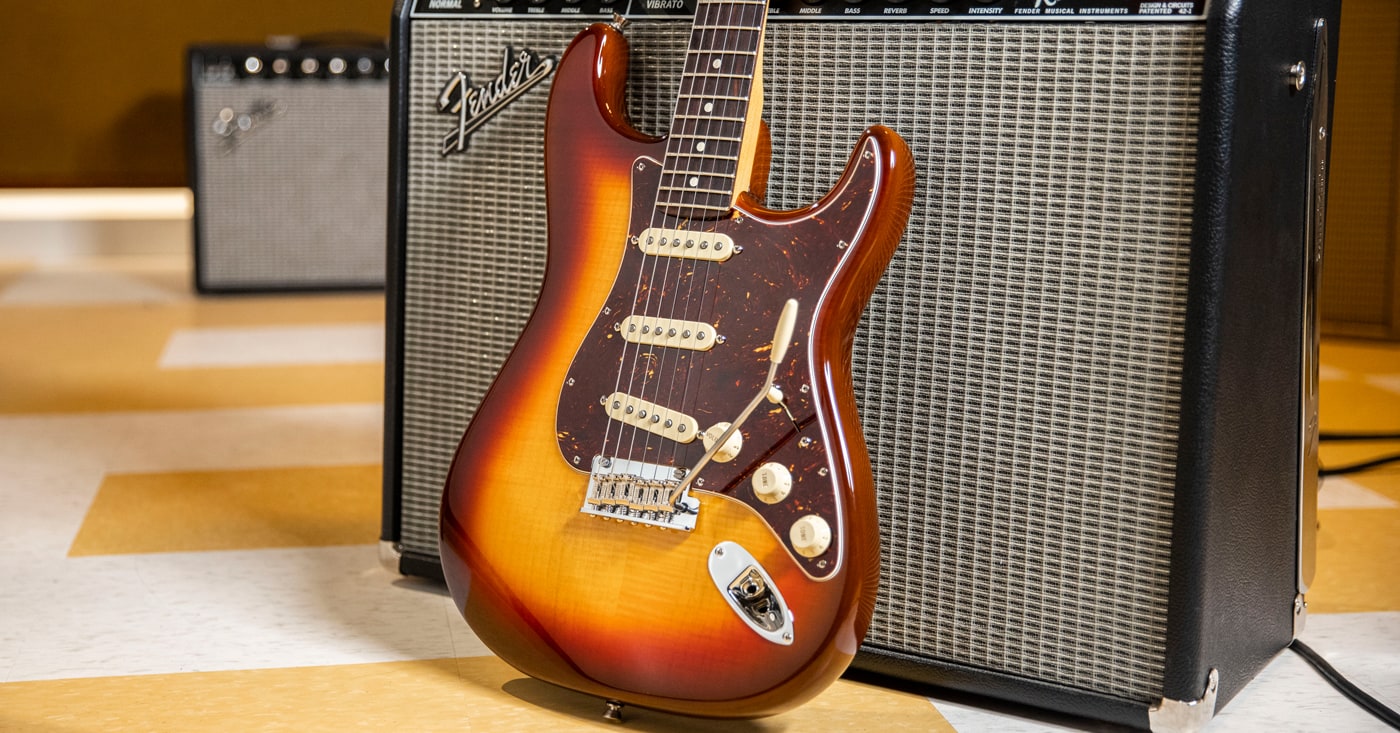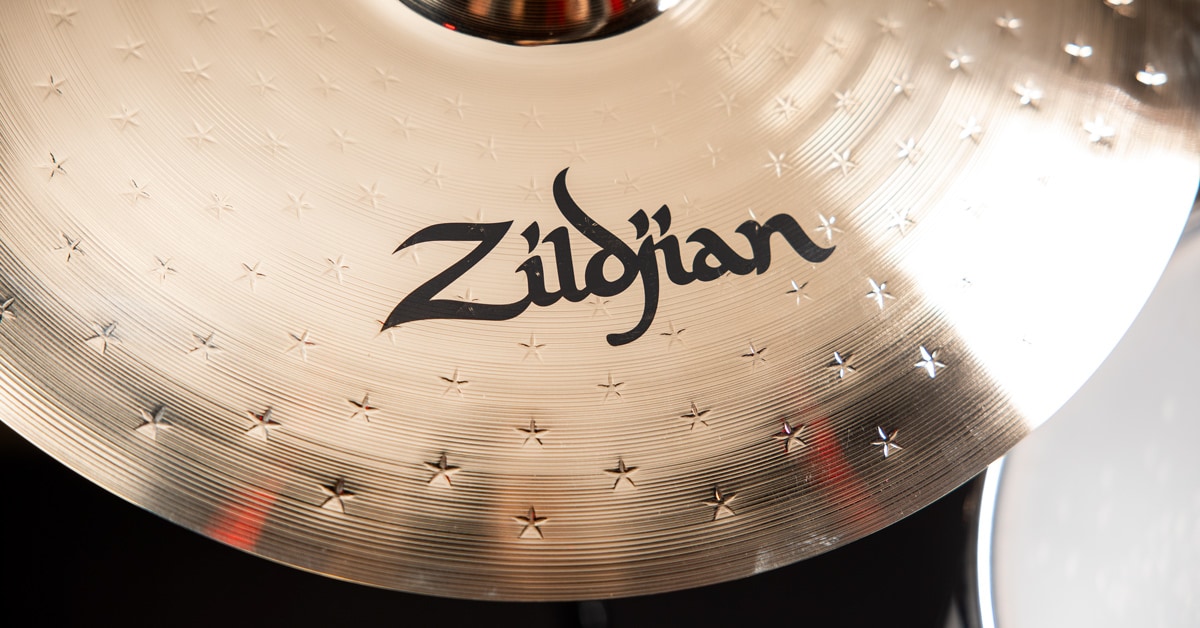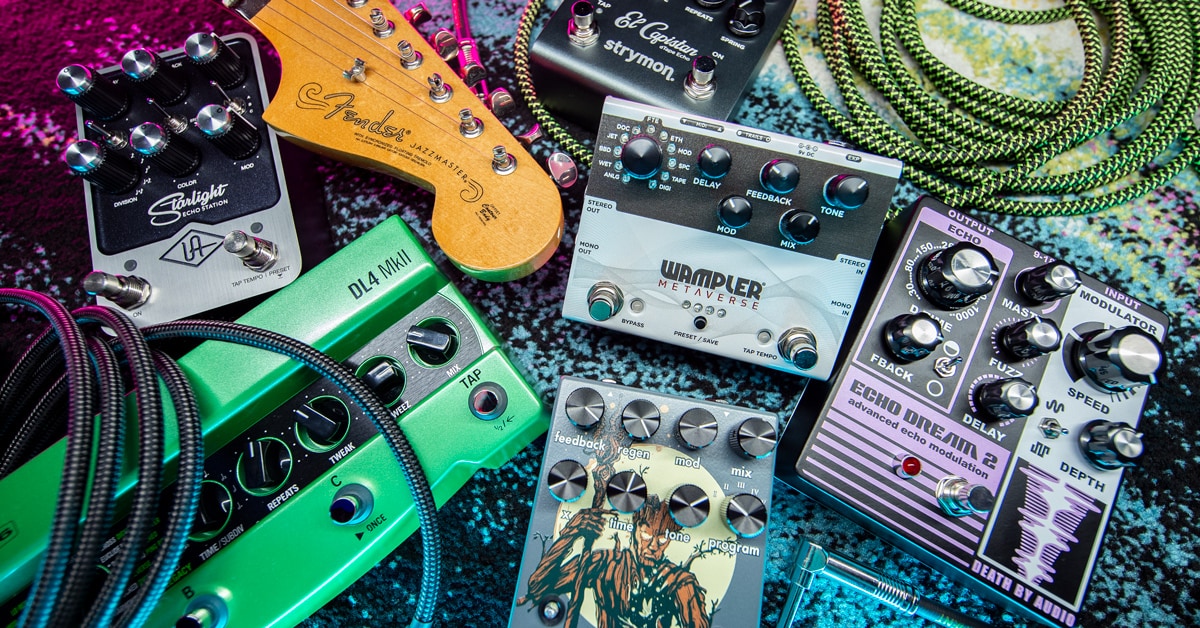Whether feral and raging or serene and ethereal, shoegaze constructs typically depend on the same basic signal-processing elements: fuzz, distortion, modulation and colossal gobs of reverb. In many shoegaze productions, reverb is the glue that unites the disparate instrumentation, vocals and other effects, as well as ensures the atmospheric barrage of sound is dimensional, animated and as sensationally expansive as a Cinemascope action flick.
But as seminal shoegaze guitarist Robin Guthrie proved, reverb is far from the solitary—or even most important—effect for creating enthralling soundscapes of drip.
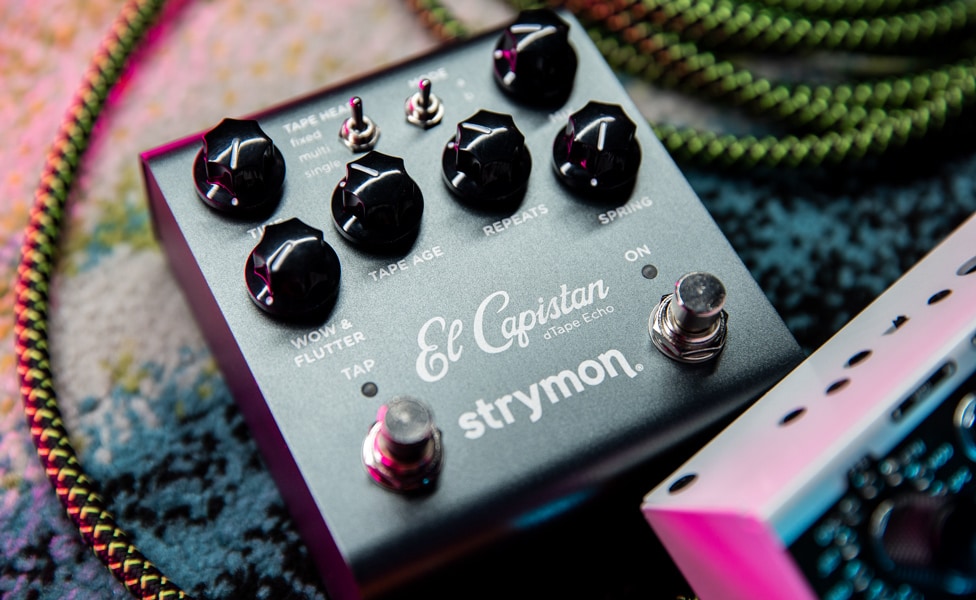
While Guthrie used his share of ’verb from time to time, he preferred building his ambient temples using the cleaner luster of cascading delays, as opposed to the often slurry consistency of a massive reverb. He would sometimes link together as many as 10 or more delays to create the chattering rhythm sparkle on Cocteau Twins tracks.
As he told Guitar Player in 1996: “I’m not a fan of reverb—I like to create space using a lot of delays.”
Initially building his own effects—as he didn’t have the cash on hand to buy pedals and rack gear—Guthrie eventually assembled two vintage WEM Watkins Copicat tape-echo machines and an Electro-Harmonix Memory Man, and then sought out MIDI-controlled processors for live performances (due to effects changes being managed by a sequencer), including his “favorite” Yamaha D1500 digital delay, a Zoom 9050 multi-effector used solely for delay and a BOSS DE-200 Digital Delay. In addition, several other shoegaze pioneers used the BOSS DD-3 Digital Delay, including Andy Bell (Ride), Neil Halstead and Christian Savill (Slowdive) and Miki Berenyi and Emma Anderson (Lush).
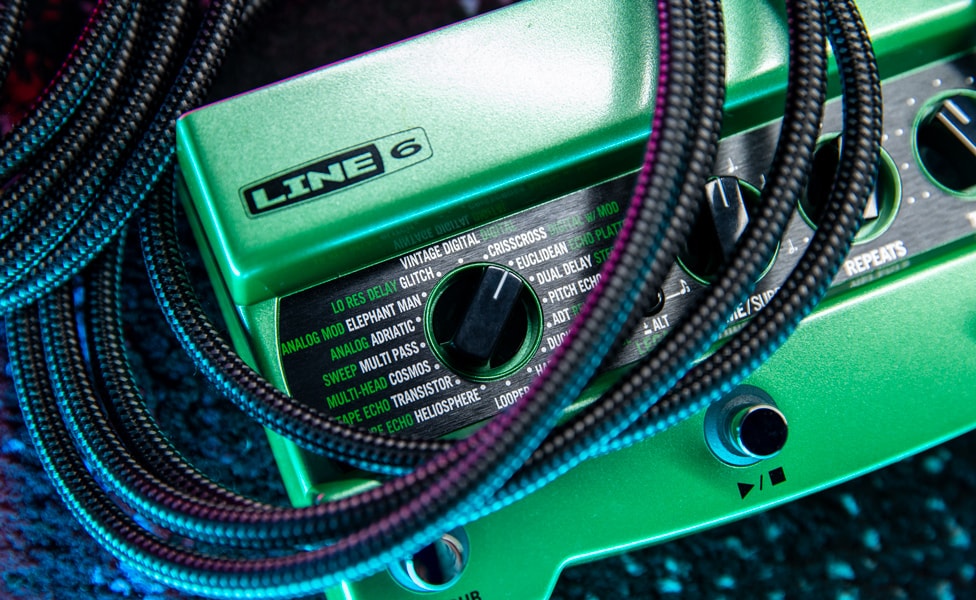
Of course, this is shoegaze, so no one effect lives in its own vacuum. Delay pedals are often routed into reverbs and fuzzes in myriad ways to produce strange and wonderful clusters of sound. And, unlike the so-called “rules” of pedal order followed by many guitarists, shoegazers often plug stuff in until things sound badass—even if the sequence of effects is completely irrational to other players. That said, if you do want some guidelines as a foundation for getting started on seeking your own way to arrange effects, spin through Finding the Best Guitar Pedal Order.
But who cares whether you are adhering to conventional wisdom or not? Ultimately, it’s your sound you’re orchestrating, and finding a unique, exciting and transformative combination of delay, reverb, fuzz and modulation effects is far more important than clinging to established norms—which was never the intent of shoegaze pioneers in the first place. Go forth boldly.
Table of Contents
Using Delay Pedals in Shoegaze
Top Delay Pedals for Shoegaze
Best Tape-Echo Emulations
BOSS RE-202 Space Echo
Strymon El Capistan V2 dTape Echo
Universal Audio Starlight Echo Station
Best Tube-Echo Emulation
Catalinbread Echorec Multi-Tap Echo
Best Old-School Delay Pedals
BOSS DM-2W
MXR M169 Carbon Copy Analog Delay
Most Versatile Delay Pedals
BOSS DD-200
Line 6 DL4 MkII
Wampler Metaverse Multi-Delay
Best Delay/Fuzz Combo Pedals
Death By Audio Echo Dream 2
Best Delay Pedal for Film Soundtracks
Walrus Audio Fable Granular Soundscape Generator
Best Rackmount Delay Emulations
Strymon DIG V2 Dual Digital Delay
Walrus Audio Mako D1 High-Fidelity Delay V2
Get the Whole Story
Using Delay Pedals in Shoegaze
Many old-school guitarists tend to use one delay pedal to animate solos, riffs or rhythm parts. Multi-effects users might even set up separate delay patches for specific parts in a song, but it’s still basically one reverb per part. As shoegaze asks for a commitment to sonic layers, exploration and discovery, the option to utilize multiple delay pedals as textural tools looms large—as in Guthrie’s abundant stacks of delay for the music of Cocteau Twins. Let’s look at some tips for crafting delay parts for shoegaze.
Configure a pedalboard that accommodates your approach to guitar. The majority of shoegaze artists use pedalboards, because, well—performing the style’s sonically complex music is all about cool pedals. You could simply toss a bunch of pedals on the floor of the stage—a lot of guitarists began their pedal journeys in just that manner—but keeping things neat, tidy and buttoned down makes for easier stage entrances and exits, quicker sound checks, less risk of cable foul ups and relatively hassle-free transport from gig to gig. Put all the pieces together and read How to Build a Guitar Pedalboard to get some tips about constructing the right pedalboard for how you like to play. If you prefer a single integrated and streamlined effects system—rather than a carnival of pretty boxes—explore portable gig rigs: The Best Multi-Effects Pedals of 2023.
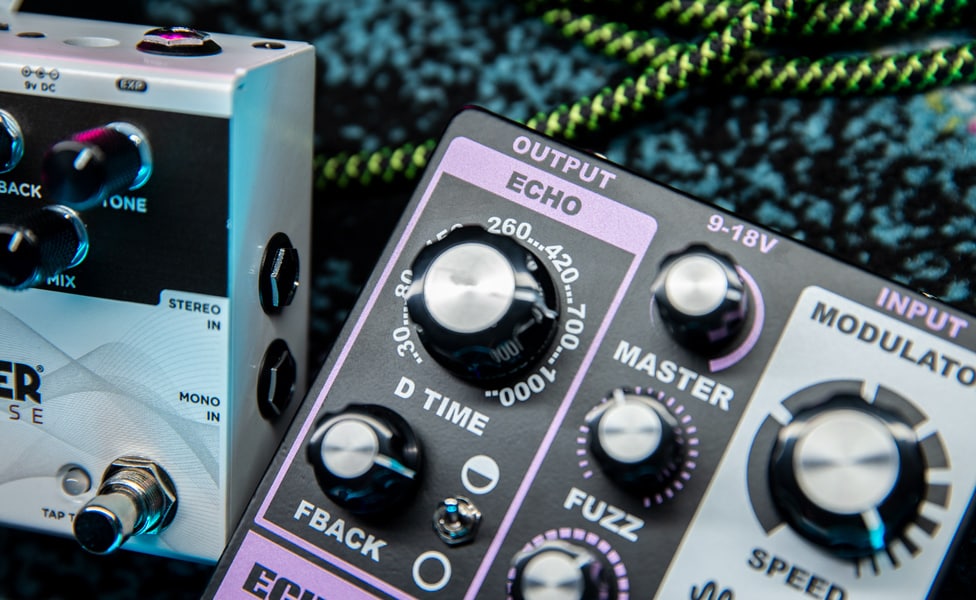
Mix and match pedals. Cinematic atmospheres usually require a melding of disparate elements, so don’t put three of the exact same delay pedals on your pedalboard and call it a day. Instead, try mixing the sounds of a pristine digital delay, a soupy tape-echo-style delay, an analog delay and perhaps a delay-modulation combo pedal. Go for as many different flavors as you can collect, and that are appropriate for your compositions. There are a bunch of great options showcased in this article’s Guide to Delay Pedals (see below), but if you want to expand your search further, check out The Best Delay Pedals of 2023.
Experiment with pedal routing. As we’ve previously mentioned, pedal order guidelines are usually to ensure pristine sound throughout a signal chain. But we’re not exclusively concerned with spotless audio for each and every pedal in a shoegaze rig. Finding the right sound for your musical explorations is more critical, and a delay patched into a fuzz sounds different than a fuzz routed to a delay. Toss out the rulebook, and test different routing locations for your delay pedals. Avoid putting them next to each other. There’s no penalty for, say, having a delay at the beginning of your signal chain, a couple of different delays scattered about the middle of the chain and perhaps a final delay pedal sitting at the end of the line. If you dig the sound, you’ve done your job.
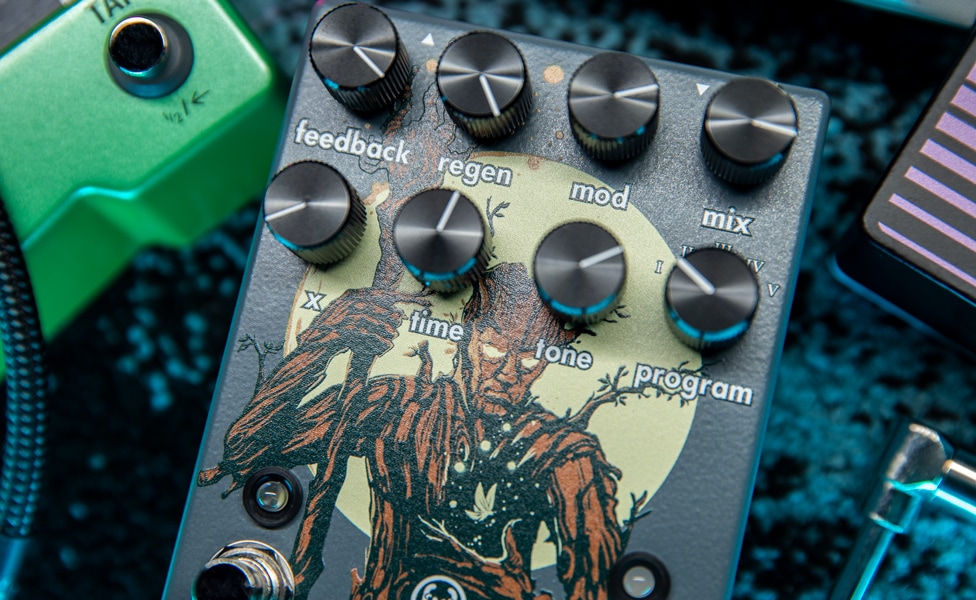
Don’t forget the wet/dry mix. Many delay pedals allow you to adjust the wet/dry blend or level of the effect. This is great, because you can construct ghostly ambiences by choosing a certain delay for the forefront of the mix and positioning other delays further back into the sound layers as psychoacoustic support or ear candy.
Go deep on effects parameters. One of the old jokes in the keyboard/synth world was that many musicians simply selected a preset sound and seldom dug into all of the available programming options. And, of course, we all know players who crank their guitar volume and tone controls to the max and never touch them thereafter. But, hey, when you are seeking unique and interesting sounds, parameters are your friends. Mess around with the knobs and switches on your delay pedals until something astounding rears its head. Even slight adjustments can sometimes produce intriguing results. You are missing out on a significant expanse of tonal power if you’re shy about touching your pedal’s controls.
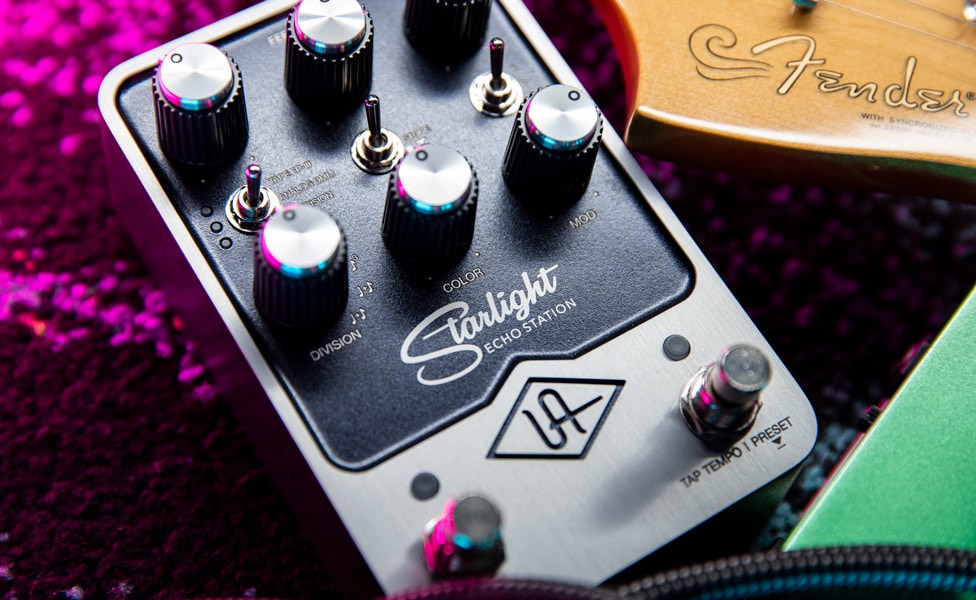
Give your amplifier some love. With all of the pedals at your disposal to construct sound, you may be forgetting that your amp wants to join the party as well. Just because you have three different delays running doesn’t mean you can’t enhance those sounds with the onboard reverb, vibrato, tremolo and master volume overdrive from your amp. Even if your amp is equipped with digital multi-effects that “echo” some of the pedals on your pedalboard, don’t favor the individual pedals over the onboard effects menu. Use everything.
Your guitar is a tone generator, too. While classic shoegaze guitarists relied on offset models, such as Fender Jazzmasters, Fender Jaguars and Fender Mustangs—and, yes, the visual impact of having the right “fashion sense” for your style of music is a thing—you should experiment with the tones other instruments can provide. Admittedly, some players—such as Guthrie—are more concerned with the maelstrom of textures offered by using effects than the sound of a particular guitar, but tone is tone, and even subtle variations in the source (your guitar) can prove beneficial when crafting textural onslaughts. All of the Fender offsets are excellent sonic platforms, of course, but you might be surprised by the initial tonal information provided by a set-neck solidbody, semi-hollowbody or hollowbody guitar.
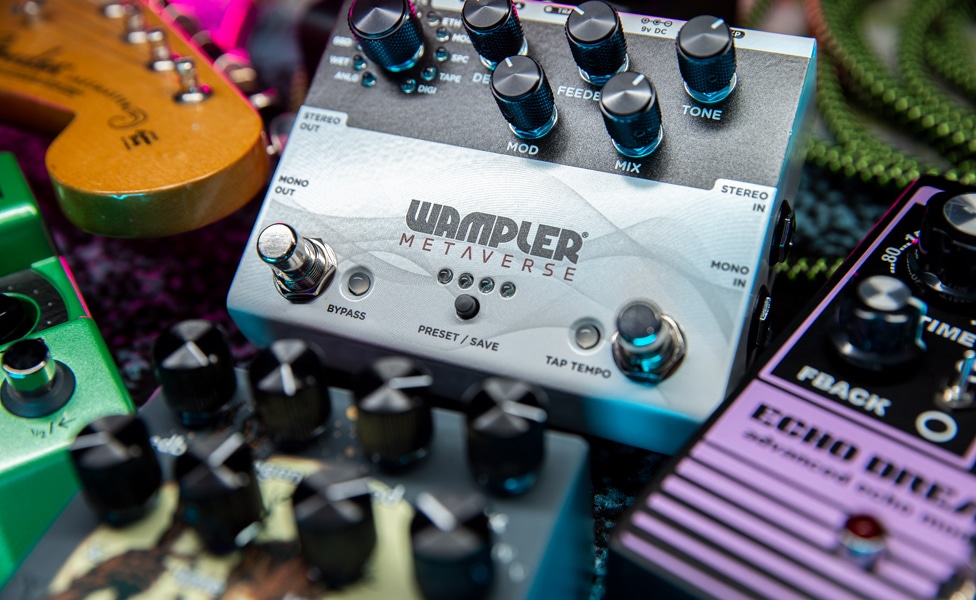
Top Delay Pedals for Shoegaze
Looking to go “full Robin Guthrie” and eschew or minimize reverb effects? Seeking cagey collaborations involving reverb and delay pedals? Aspiring to construct mammoth atmospheres or pursue extreme sonic experimentation? Here are some select delay pedals that should inspire myriad forays into the essence of echo.
Best Tape-Echo Emulations
BOSS RE-202 Space Echo
The BOSS RE-202 Space Echo delivers the vibe and character of the original Roland RE-201 tape-based Space Echo. All of the wonderful quirks of the RE-201 are emulated and onboard the RE-202, including the behavior of the record/playback mechanism, preamp coloration, variations in tape-motor speed, aged-tape simulation, runaway feedback, wow and flutter, and more. Modern updates are here, as well, such as more generous delay time than the original, warp and twist effects, onboard memory, additional reverbs and MIDI control. A compact pedal version, the BOSS RE-2, is available with 11 modes, onboard spring reverb, echo/reverb blend and more.
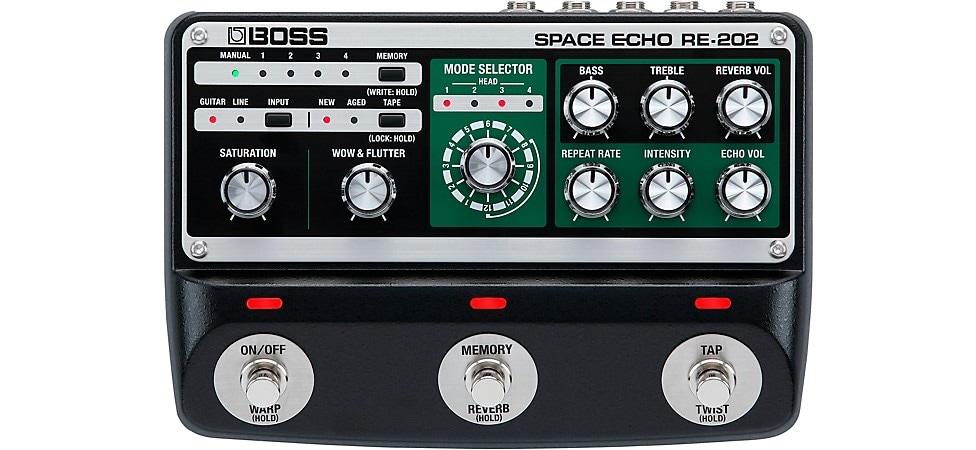
Pictured: BOSS RE-202 Space Echo
Strymon El Capistan V2 dTape Echo
Fans of early Cocteau Twins’ tracks—and guitarist Robin Guthrie’s use of two WEM Watkins Copicats—can emulate analog tape echo with the Strymon El Capistan V2 dTape Echo. But you can go much farther by selecting from three tape-head simulations, mess with wow and flutter (tape-speed fluctuations that produce warbling pitch artifacts), blend in spring reverb and even choose the age and condition of the “tape” to adjust between the pristine or outright corruption of the delay sound.
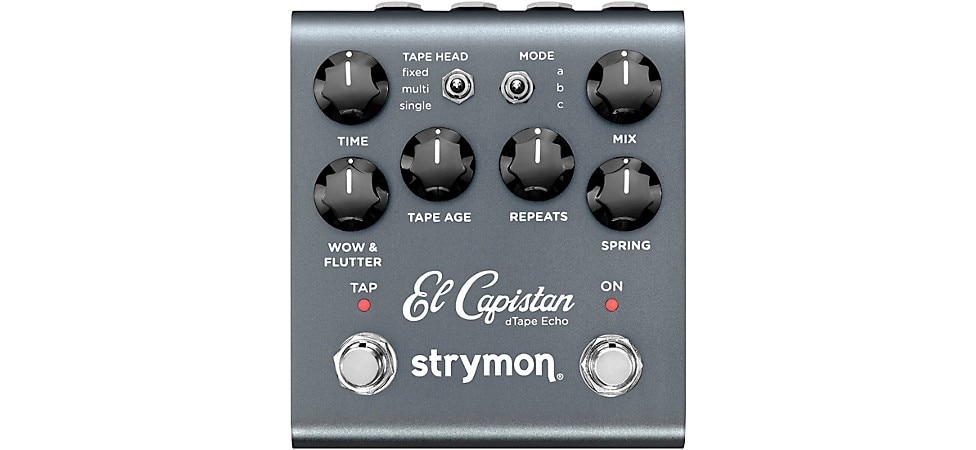
Pictured: Strymon El Capistan V2 dTape Echo
Universal Audio Starlight Echo Station
The Universal Audio Starlight Echo Station covers the sounds of the tape, analog and digital delay eras. The tape-echo emulation is based on the Echoplex EP-3, the bucket-brigade analog circuit on the Electro-Harmonix Deluxe Memory Man and the digital delay on UA’s own plug-in. There’s also a bonus—a Jack White-approved garden-hose delay simulation based on the original design by UA founder and legendary audio engineer Bill Putnam Sr. A very cool sibling to the Starlight is the vintage-flavored Universal Audio Del-Verb Ambience Companion, which features emulations of a tape echo, an iconic studio’s plate reverb (from The Plant in Sausalito, California), a spring reverb tank, an analog bucket-brigade circuit and a digital rackmount reverb from the 1980s. Want more shoegaze goodness from Universal Audio? Read about the launch of the UAFX series pedals.
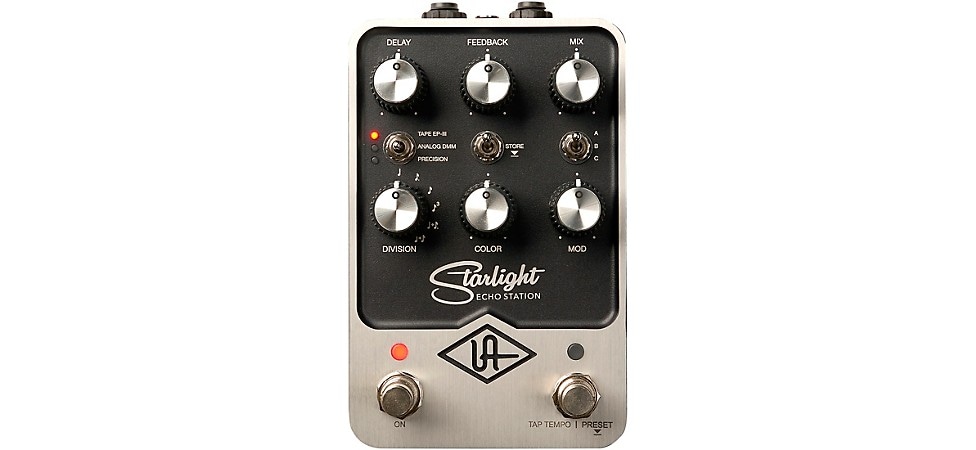
Pictured: Universal Audio Starlight Echo Station
Best Tube Echo Emulation
Catalinbread Echorec Multi-Tap Echo
The Catalinbread Echorec Multi-Tap Echo is modeled from the Binson Echorec—a rather bizarre yet celebrated tube echo that debuted in 1955 with a gold-painted housing, Buck Rogers-esque lettering on the controls and a big, movie-marquee-style presentation of the company and model names at the top of the front panel. The Echorec utilized an actual spinning drum as its recording medium (rather than tape) and four playback heads, which seems unwieldy, but the design produced better frequency response and less wow and flutter than tape-based delay machines. The versatility of the original version was such that it was used by suit-and-tie rockers like Hank Marvin (guitarist of the Shadows) and psychedelic artists, such as Syd Barrett, David Gilmour and Richard Wright of Pink Floyd. (It was even the secret ingredient of John Bonham’s massive drum sound on Led Zeppelin’s “When the Levee Breaks.”)
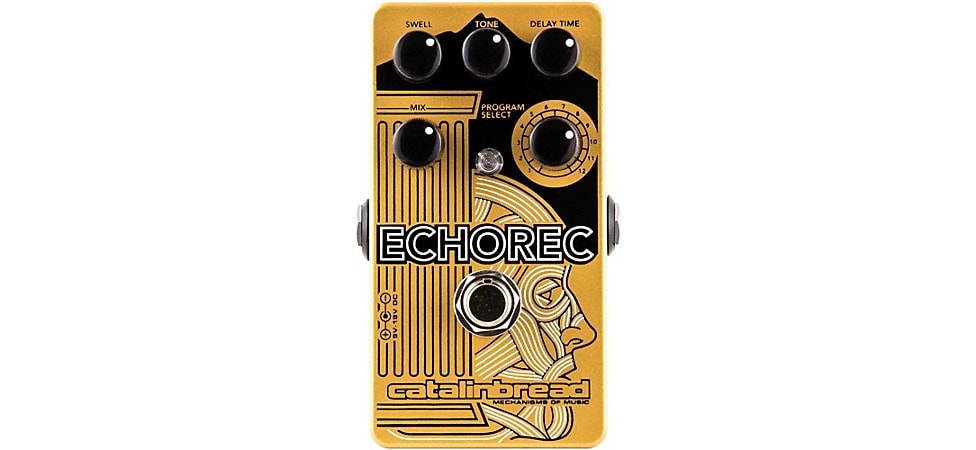
Pictured: Catalinbread Echorec Multi-Tap Echo
Best Old-School Delay Pedals
BOSS DM-2W
The BOSS DM-2W is an excellent “throwback” to the sound of bucket-brigade analog delay circuits, as this Waza Craft version is a crafty update of the original DM-2 Delay that was manufactured from 1981–1984. The lush, dark tone was a vibey (and less expensive) alternative to the more pristine digital delay devices of the time, which was attractive to many of the first wave of shoegaze players.
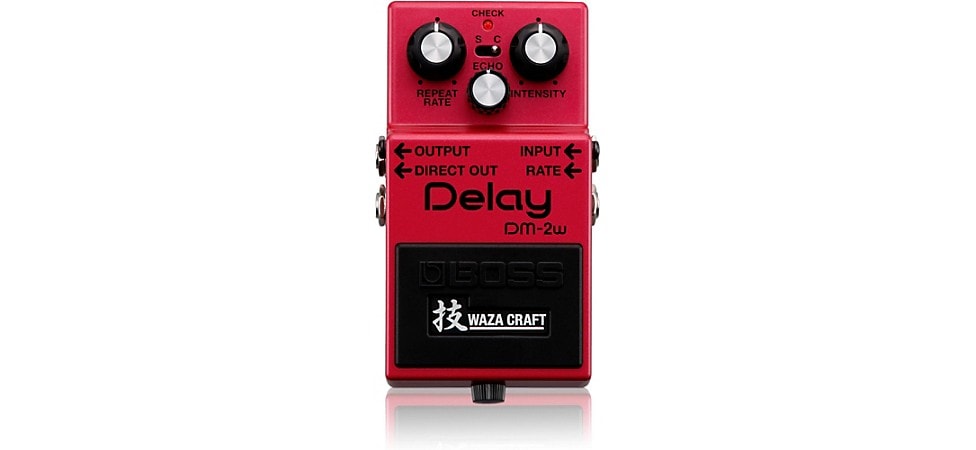
Pictured: BOSS DM-2W
MXR M169 Carbon Copy Analog Delay
The MXR M169 Carbon Copy Analog Delay boasts a totally analog, bucket-brigade circuit with optional modulation added. Up to 600ms of delay time is on tap, and you can dial in everything from spiky rockabilly-approved slap echoes to undulating rhythmic repeats.
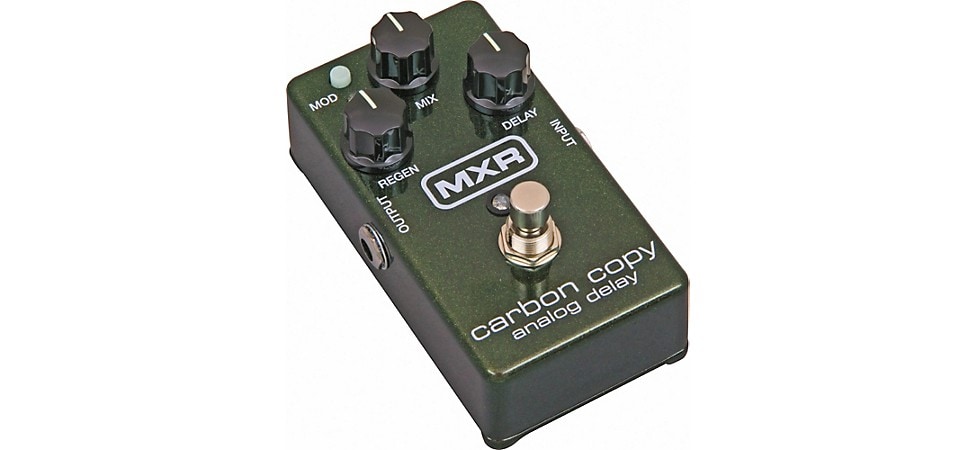
Pictured: MXR M169 Carbon Copy Analog Delay
Most Versatile Delay Pedals
BOSS DD-200
The BOSS DD-200 offers a whole bunch of delay types and sounds, so if your pedal-acquisition budget and/or pedalboard real estate is maxed out, this is a fantastic “everything in one” option. Mode selection and parameter adjustment are quick and intuitive via top-panel knobs and switches—which is a very good thing, as there are so many goodies. Choose from analog and digital delay modes, as well as tape echo, reverse, lo-fi, pads, pitch-shifted variations, a looper and more. There’s also a compact pedal model, the BOSS DD-8, that offers many of the DD-200’s top hits with fewer knobs and a smaller chassis.
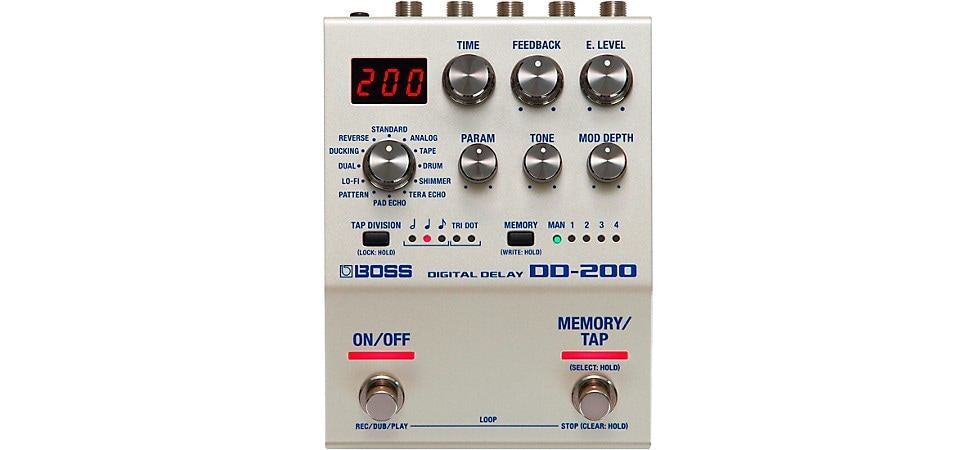
Pictured: BOSS DD-200
Line 6 DL4 MkII
The Line 6 DL4 MkII provides a heady smorgasbord of 30 delays—15 that are new for the MkII and drawn from Line 6’s HX series of amps and processors. The menu includes two loopers and delay types, such as digital, analog, tape, tube, modulated, reverse and more. There’s even an XLR microphone input for processing vocals, acoustic instruments and anything else you can capture with a mic. Check out a deep dive on the DL4 MkII with Line 6 Chief Product Designer Eric Klein.
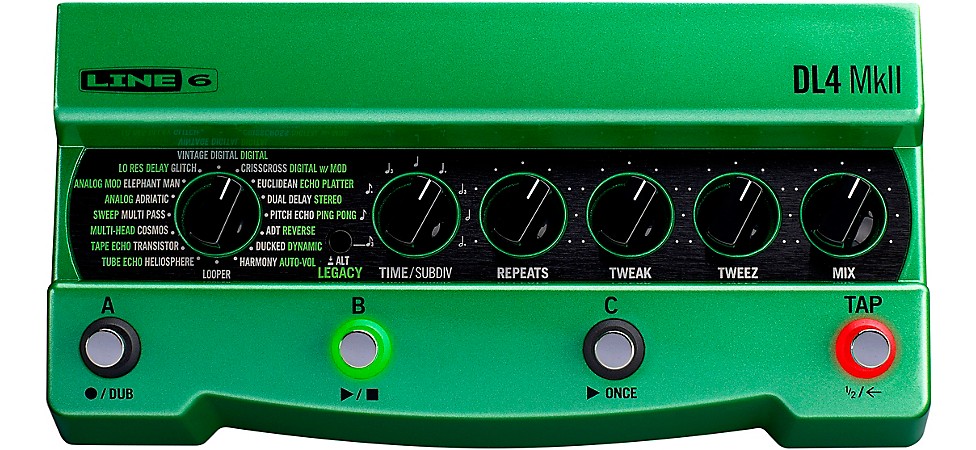
Pictured: Line 6 DL4 MkII
Wampler Metaverse Multi-Delay
The Wampler Metaverse Multi-Delay provides a bounty of patches that veer toward the vintage. Many are designer Brian Wampler’s homages to his favorite circuits, including a BOSS MD-2 analog delay, a Way Huge Smalls Aqua-Puss (modulated tape-like analog sound), Electro-Harmonix Memory Man (’70-style bucket brigade), Binson Echorec (drum-based mechanical delay), Maestro Echoplex and BOSS Space Echo (tape-echo algorithms) and TC Electronics 2290 (digital delay). Also available are analog- and digital-delay options with flanging, as well as onboard versions of some of Wampler’s popular delay pedals: The Doctor (lo-fi ambient delay), Ethereal (twin digital delay and reverb) and Faux Tape Echo (tape delay).
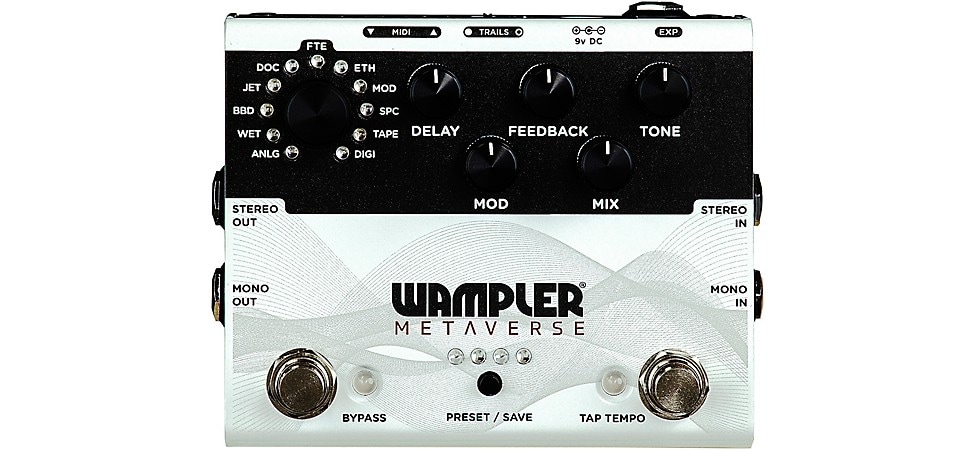
Pictured: Wampler Metaverse Multi-Delay
Best Delay/Fuzz Combo Pedal
Death By Audio Echo Dream 2
The Death By Audio Echo Dream 2 has an onboard fuzz box—which is a helpful feature if you prefer your delay and fuzz eruptions coming from a single pedal. The Echo Dream 2 also has onboard modulation—which is dangerous, but in a good way. For example, you can set the pedal for lovely little flutters of chime, and then quickly degenerate into terrifying spasms of grit and spittle underscored by nausea-inducing undulations. It’s genius.
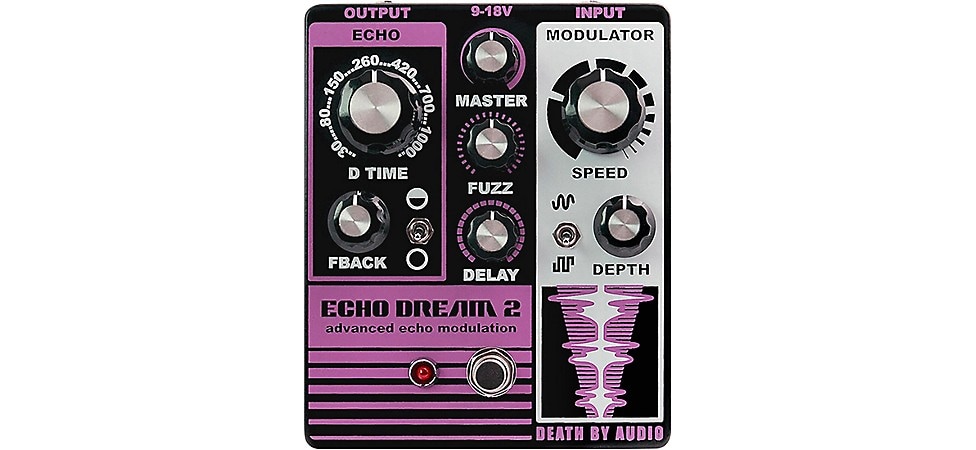
Pictured: Death By Audio Echo Dream 2
Best Delay Pedal for Film Soundtracks
Walrus Audio Fable Granular Soundscape Generator
The Walrus Audio Fable Granular Soundscape Generator is based on granular synthesis, which splits audio samples into teeny slices—or “grains”—that can be manipulated in various ways to create unique and mesmerizing sounds. If that’s a bit much to grasp—and, trust us, it’s a lot to take in—at least the Fable presents familiar controls, such as Feedback, Regen, Mod, Mix, Time and Tone. What actually happens when you twist knobs may border on sorcery, which is why you’ll appreciate the “soundscape generator” part of the pedal’s name, because what the Fable generates is the sound of a sci-fi, apocalyptic, horror drama of light and dark. In other words, you can go from stuttering sparkles to synth bloops and bleeps to otherworldly drones and more.
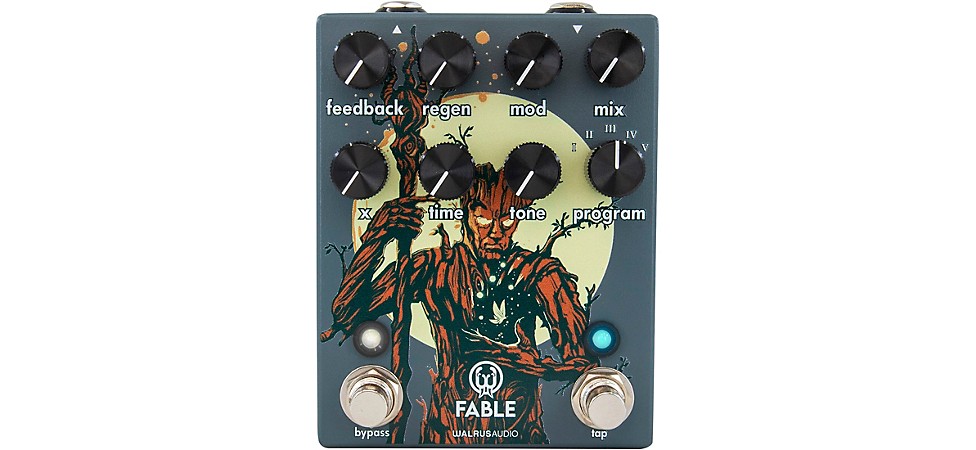
Pictured: Walrus Audio Fable Granular Soundscape Generator
Best Rackmount Delay Emulations
Strymon DIG V2 Dual Digital Delay
The Strymon DIG V2 Dual Digital Delay evokes the recording-session sonics of the 1980s, when racks upon racks of effects processors crowded into control rooms, and producers always asked for digital delay or reverb to add “radio sheen” to potential hits. DIG V2 offers two popular MTV-era delay voices—early ’80s adaptive delta-modulation and mid-’80s 12-bit pulse-code modulation—along with a modern, hi-resolution mode. If your shoegaze tracks require intricate and synchronized, MIDI-sequencer-style repeats, the DIG V2 can offer clarity, precision timing and expressive detail.
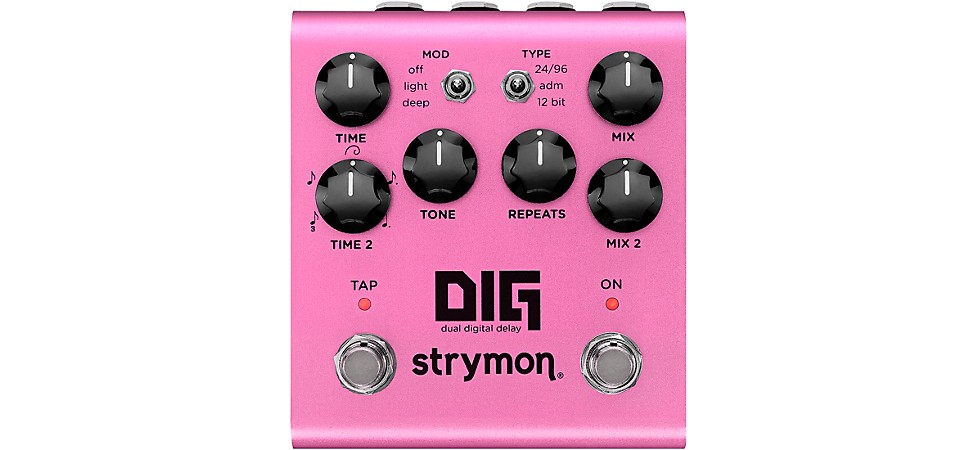
Pictured: Strymon DIG V2 Dual Digital Delay
Walrus Audio Mako D1 High-Fidelity Delay V2
The Walrus Audio Mako D1 High-Fidelity Delay V2 is really like having a studio processor at your feet. The Mako D1 delivers sharp, bold, articulate and pristine audio for each of its five delay modes—Digital, Modulated, Vintage, Dual Delay and Reverse. For crafting shoegaze layers, the sound can easily be heard if the delay is mixed behind large, blossoming reverbs or cascading delays. It will also break through even the most brutally saturated fuzz assaults, ensuring your delay lines will not be eaten alive by dense and complex guitar textures.
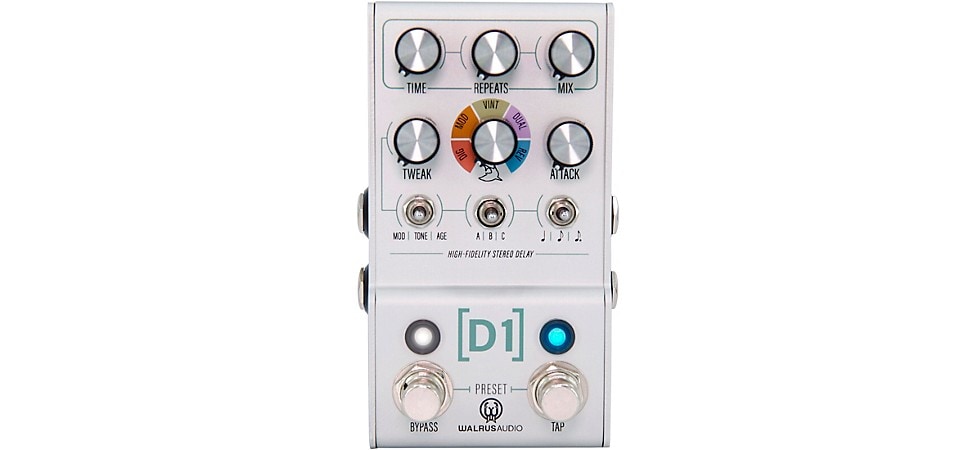
Pictured: Walrus Audio Mako D1 High-Fidelity Delay V2
Get the Whole Story
Don’t stop here. Uncover the sonic scoop on two other important shoegaze effects by reading The Best Fuzz Pedals for Shoegaze and The Best Reverb Pedals for Shoegaze. Start building up your collection, because the road to excess is monumentally beneficial if the overabundance relates to signal processing and soundscape design.


